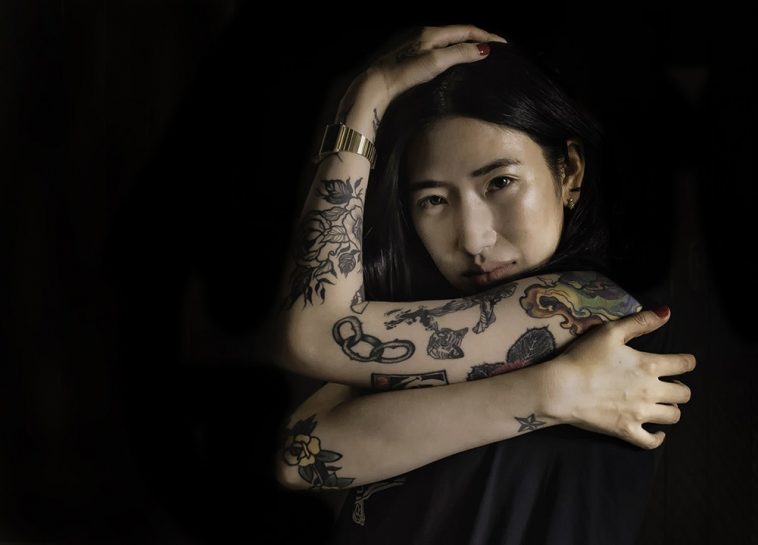
Millennial South Koreans talk a great deal about generational change and the related changes in attitudes and behaviors. One visible and physical aspect of this in recent years has been a rise in tattoos.
While 0n-skin artwork has surged with a vengeance into fashion among hipsters in the wider world, the trend is arguably more notable in Korea, where for hundreds of years tattoos were virtually taboo.

While the practice has been with Koreans for at least some 1,500 years, the neo-Confucian culture of the Joseon Dynasty (1392-1910) put the kibosh on it.
Under prevailing cultural beliefs, bodies were gifts from parents, and out of filial piety, bodies are not to be purposely mutilated or otherwise decorated. Moreover, some criminals were tattooed with their crimes being engraved upon their skins, and some slaves had the names of their masters inscribed on their flesh.
This negative attitude toward tattoos continued up to the 2000s.
What is behind the ongoing change?
Obviously, globalization is partly responsible. With Koreans being among the Top 10 groups of international travelers in 2018, there is widespread exposure to global trends. Likewise, more young foreigners are visiting and residing in Korea.
But the real reason may be deeper, closer to home – and less about attraction and more about rebellion against social norms.
Millions of Koreans in their 20s and 30s have done all the right things to live the “Korean dream”– study hard at school, attend a good college, graduate and land a safe, steady white-collar job.
But the “job for life” social contract was destroyed after the Asian economic crisis of 1997. The Korean economy has matured in recent years and globalization has led the conglomerates that dominate the economy to find business offshore.
This means that not only have the ultra-high growth rates of the 1970s, ‘80s and ‘90s slowed, but the formerly abundant supply of white-collar jobs has also dried up.
Meanwhile, the percentage of college graduates, limited to the top fifth of predominately male high school seniors during the 1970s, has widened to roughly 90% of high school graduates of both genders. The result is increased competition for jobs with career potential. Today, a coveted occupation for young people is government work – something unheard of among college grads 50 years ago.
A new generation of young people now lives at home or shares tiny flats while working part-time or short-term jobs with little future potential. Many feel shame and frustration: The sacrifices made by their families and their own efforts have come to naught. A once dominant sense that “things are getting better” has evaporated.
One side effect is the emergence of a nascent alternative culture, visible in the adoption of less conventional and freer attire and body decoration, such as small (and often faux, removable) tattoos.
While an increasing number of young persons are exhibiting more flamboyant tattoos, young men have to wait until after their military obligations as large tattoos are not permitted in the Korean military. Young men who go ahead with obtrusive tattoos prior to their mandatory conscription are required to do non-military national service.
Young women are usually more reserved, or more particular where they place their artwork. Nonetheless, one can now see the rare Korean young woman with extensive tattoos. Two years ago, I was surprised to see a young female office worker sporting an exposed upper chest tattoo in a Seoul government facility. This was unseen a decade or so ago.
While hardly commonplace, tattoos are no longer rare, and in even more limited areas, body piercing is also being seen. Tattooing makes an indelible statement: The possessor of the tattoo is not of the mainstream.
Still, there may be an inbuilt prejudice against those with tattoos – one I recognized in myself.
As a photographer engaged in photo essays on the topic, I was struck by how polite and courteous my subjects were. Yet I sensed a quiet desperation: Most of the subjects did not see where their lives were going.
My overall sense was that I was documenting more of an economic than a social or cultural phenomenon.
Asia Times thanks the following for the location shoots: Gentle Monster Showroom of Gyedong (Bukchon); Skunk Works (Seoul); The Vinyl Underground (Busan); and Gyeongbok Palace, Seoul.
Asia Times Financial is now live. Linking accurate news, insightful analysis and local knowledge with the ATF China Bond 50 Index, the world's first benchmark cross sector Chinese Bond Indices. Read ATF now.


